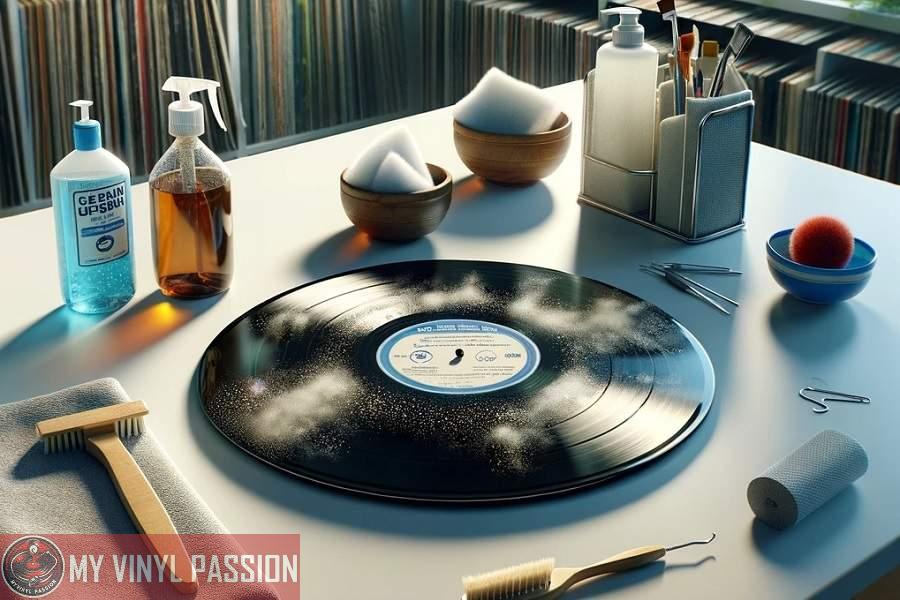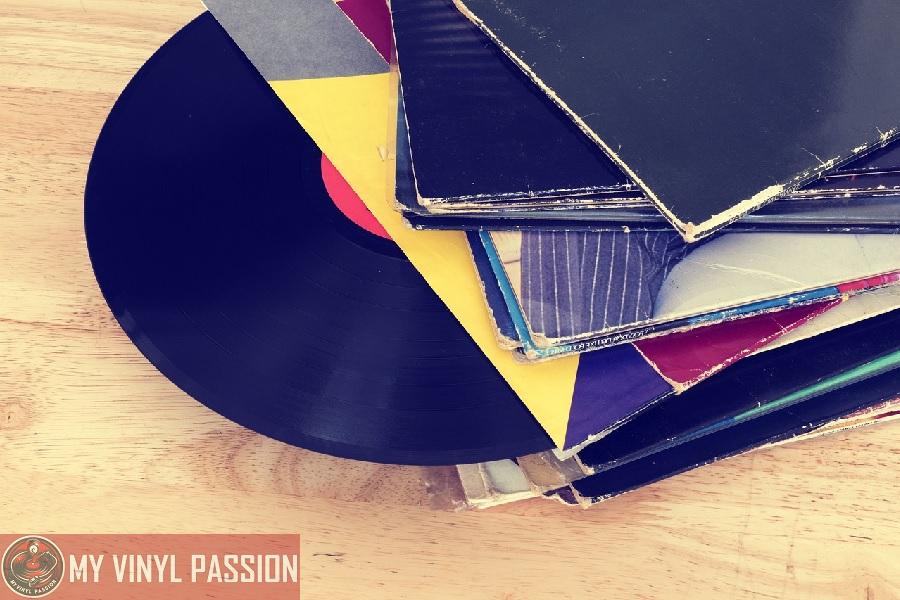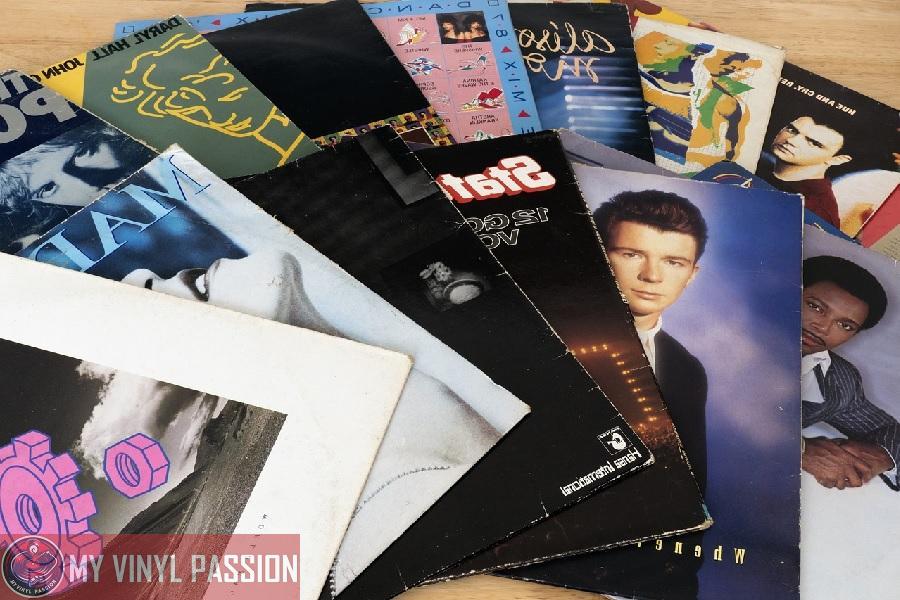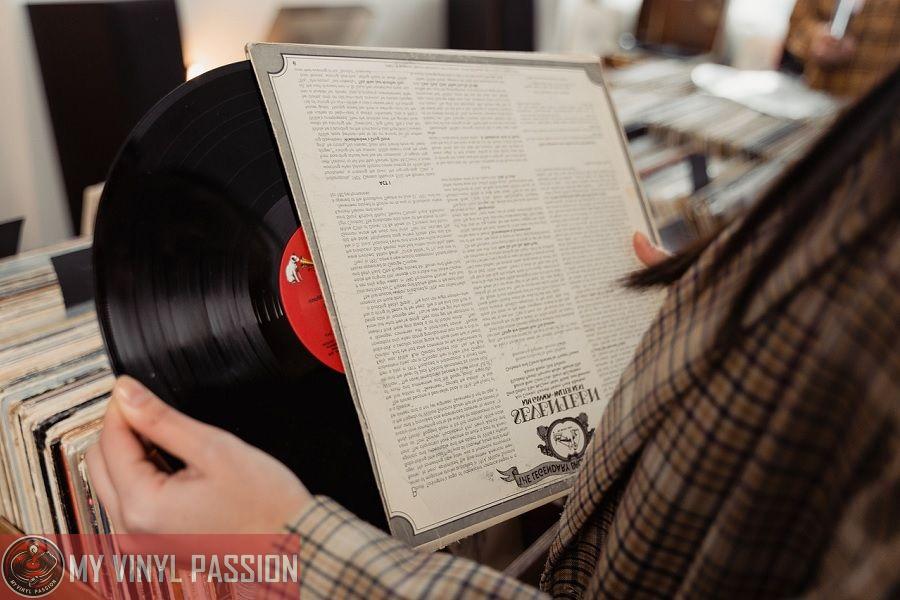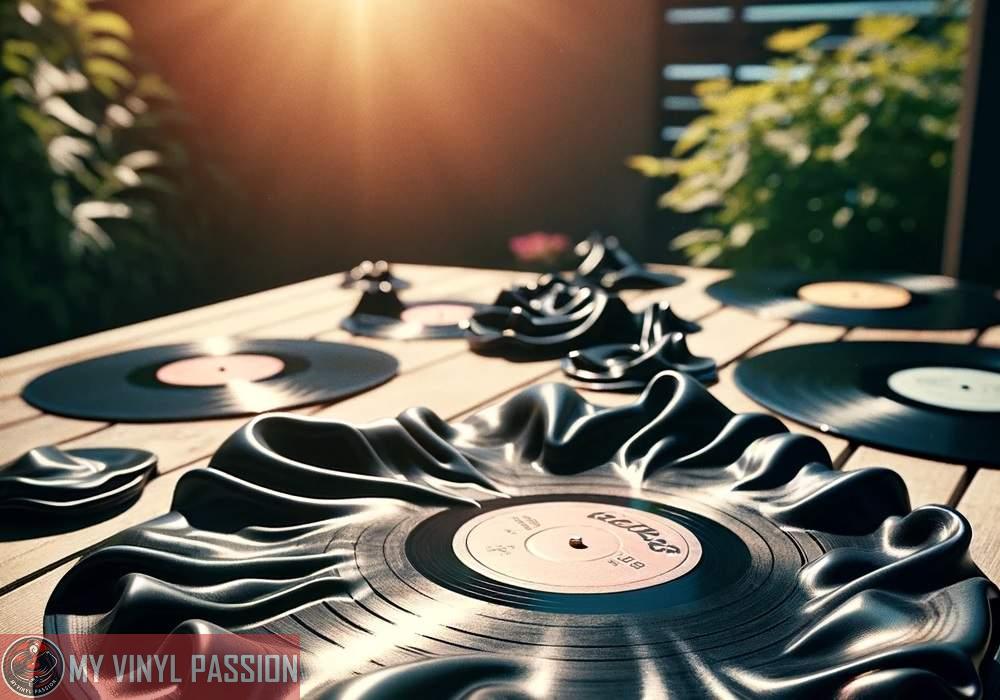Vinyl records are treasured for their rich sound and the tactile experience they provide to music enthusiasts.
Over time, however, these records can fall victim to various forms of contamination, with mould stains being a particularly common issue in humid environments or when records have been stored incorrectly.
Mould not only blemishes the visual aspect of your vinyl but can also degrade its sound quality, leading to audio distortions.
In Summary
Use a mild detergent mixed with distilled water to gently clean mold stains from vinyl records, avoiding harsh chemicals.
Apply the cleaning solution with a soft, lint-free cloth or a soft-bristled brush, gently wiping or brushing in a circular motion along the grooves.
After cleaning, allow the vinyl record to air dry completely in a clean, dust-free environment to prevent any water spots or additional damage.
Regularly clean and store vinyl records in a dry, cool place to prevent future mold growth and maintain their condition.
Addressing this problem promptly and effectively is crucial to ensuring your records continue to produce the clear and detailed sound they were designed to deliver.
Removing mould stains from vinyl records requires a careful approach to avoid causing damage. It’s important to use the right materials and techniques suited to the delicate nature of vinyl.
Gentle cleaning solutions can help in dissolving the mould without harming the grooves of the record, while soft, lint-free cloths are recommended to wipe away contaminants without scratching the surface.
In some instances, more persistent stains might need a specialized vinyl cleaning fluid or professional cleaning services, ensuring that the integrity of your record is maintained throughout the cleaning process.
Understanding Mold on Vinyl Records
Mold on vinyl records is not only a visual blemish but can also compromise your listening experience and the longevity of your cherished collection. Grasping the types of mold you may encounter, its effects, and causes is essential in maintaining the integrity of these ambassadors of music history.
Types of Mold and Mildew
There are numerous types of mold and mildew that can afflict vinyl records, each displaying different characteristics. Black mold, known to be one of the most notorious, can appear as dark spots on your records.
White mold tends to show as powdery substances and is quite common in damp environments. Identifying these intruders is the first step in safeguarding your collection.
Effects on Sound Quality and Vinyl Health
When mold takes root on the grooves of a record, audio quality can be significantly degraded. Mold and mildew, by introducing unwanted surface noise and pops, can interfere with the clarity of sound that vinyl is acclaimed for.
Over time, heavy mold growth may lead to permanent damage, harming the long-term health of your vinyl.
Common Causes of Mold Growth
Your vinyl records could become breeding grounds for mold due to humidity, poor ventilation, and dark spaces. Mold thrives in areas with spores that float in the air, looking for damp surfaces.
As a collector, you should be vigilant about storage conditions to prevent these silent destroyers of music history from taking hold.
Safety Measures for Mold Removal
When removing mold from a vinyl record, your safety comes first. Ensure you have the right protective gear and that your work area is properly prepared to avoid health risks like skin irritation, respiratory issues, and allergic reactions.
Personal Protective Equipment
- Gloves: Always wear nitrile or rubber gloves to prevent direct contact with mold and cleaning agents that can irritate your skin.
- Mask: A N95 respirator mask is crucial to prevent inhaling mold spores, which can cause sneezing, coughing, and watery eyes.
Preparing the Work Area
- Air Purification: Turn on an air purifier to capture airborne mold spores in the vicinity as an added precaution.
- Containment: Seal off the affected area with plastic sheeting to prevent spores from spreading to other parts of your space while cleaning.
Essential Cleaning Materials and Solutions
When removing mould stains from vinyl records, it’s crucial to use the right materials and solutions to avoid damage. Using gentle but effective products will restore your records without harming them.
Recommended Cleaning Solutions
For effective mould removal from your vinyl records, a mixture of isopropyl alcohol and distilled water is often recommended. It is critical to use distilled water due to its lack of minerals which could otherwise deposit residue. A popular mixture ratio is one part isopropyl alcohol to three parts distilled water.
- Isopropyl Alcohol: It helps in breaking down the mould without harming the vinyl.
- Distilled Water: Ensures no mineral deposits are left on your record.
Mix these ingredients gently to create your cleaning solution, taking care not to create bubbles.
Tools for Manual Cleaning
The tools you select for the cleaning process are as important as the cleaning solution itself to ensure effective and safe mould removal:
- Microfiber Cloths: Use lint-free, soft microfiber cloths to apply the solution and to dry the record. Microfiber is gentle and reduces the risk of scratching.
- Soft-Bristled Brush: For areas with more persistent mould, use a soft-bristled brush in a circular motion along the grooves.
- Record Cleaning Machine: If available, a record cleaning machine can provide a thorough and uniform clean.
When using these tools, work in a circular motion in alignment with the record’s grooves. This preserves the integrity of the tracks while ensuring the mould is completely removed.
Step-By-Step Mold Removal Process
Eliminating mold from vinyl records requires a careful balance to maintain their integrity while ensuring thorough cleaning. Follow these steps to remove mold stains effectively and prevent future growth.
Initial Cleaning Steps
- Prepare Your Work Area: Choose a clean, stable surface in a well-lit room. Lay down a soft, lint-free cloth to protect the record. Gather your supplies, including distilled water, isopropyl alcohol, a soft, anti-static cloth, and a gentle vinyl record cleaning solution.
- Remove Loose Particles: Gently brush the surface of the record with a soft, anti-static record brush to dislodge any loose mold particles. Always brush using circular motions starting from the center and moving outwards to the edge.
Deep Cleaning Techniques
- Create a Cleaning Solution: Mix a solution of distilled water with isopropyl alcohol at a ratio of 3:1. Add a drop of dishwashing liquid for extra cleaning power.
Apply the Cleaning Solution:
- Direct Application: Dab a small amount of the cleaning solution onto the cloth, not directly onto the record. Gently clean the record in a circular motion, carefully avoiding the record’s label.
- Deep Clean Using a Vinyl Record Cleaning Kit: For records with significant mold, consider using a vinyl record cleaning kit. These kits often come with a specially designed fluid and tools that ensure a deeper clean without damaging the record.
Drying and Preventing Residue
- Careful Drying: Once cleaned, the record must be air dry. Place it on a clean, dry cloth, ensuring no dust or particles can settle back onto the surface. Do not attempt to speed up this process with a hairdryer or direct heat, as this can warp the vinyl.
- Preventing Future Mold Growth: Store your records in a cool, dry place away from direct sunlight to prevent mold growth. Consider inner sleeves that are anti-static and designed to ward off dust accumulation.
By following these steps, you can clean mold off vinyl records efficiently, reaffirming your collection’s longevity and sound quality. Remember to always handle your records with care, use products intended for vinyl record cleaning, and store your records correctly to keep them in prime condition.
Protecting Your Vinyl Records
Preserving the condition of your vinyl records is paramount to maintaining their sound quality and value. This involves careful storage and handling to avoid environmental hazards like mold and temperature swings.
Storage and Handling Best Practices
When storing your vinyl records, it’s crucial to keep them away from direct sunlight to prevent warping and fading. Store them vertically in climate-controlled environments where the temperature hovers around 65-70°F (18-21°C) to maintain the integrity of the vinyl.
Humidity levels should ideally be kept around 45-50% to deter mold growth. Use acid-free storage containers to shield your records from dust and potential chemical reactions that can degrade the vinyl over time.
Preventive Measures to Avoid Mold
To prevent mold, regular cleaning and maintenance is necessary. Clean your records using a soft, anti-static brush to remove dust before and after each use. Investing in a good quality record cleaning solution can also preserve the grooves’ cleanliness.
Consider using dehumidifiers in your storage area to manage moisture levels effectively and reduce the risk of mold. Keep a hygrometer handy to regularly check the pH levels and humidity to ensure your records stay in a safe environment.
Regular vigilance and a consistent cleaning schedule will keep your vinyl collection sounding pristine for years to come.
FAQs
Can I use regular household cleaners to remove mold from vinyl records?
It’s not recommended to use harsh household cleaners. Instead, use a mild detergent mixed with distilled water for a safer and gentler cleaning solution.
What type of cloth or brush should I use for cleaning mold off vinyl records?
Use a soft, lint-free cloth or a soft-bristled brush, such as a record cleaning brush, to gently remove mold stains without scratching the vinyl.
How do I dry a vinyl record after cleaning mold off of it?
After cleaning, let the record air dry completely in a clean, dust-free environment. Avoid using heat or direct sunlight for drying.
Is it possible to completely remove mold stains from vinyl records?
While mild mold stains can often be cleaned off, severe mold damage may be irreversible, especially if it has etched into the grooves of the record.
How can I prevent mold growth on vinyl records in the future?
Store your vinyl records in a dry, cool environment, and ensure they are clean before storing. Using inner sleeves that are anti-static and mold-resistant can also help prevent future mold growth.
